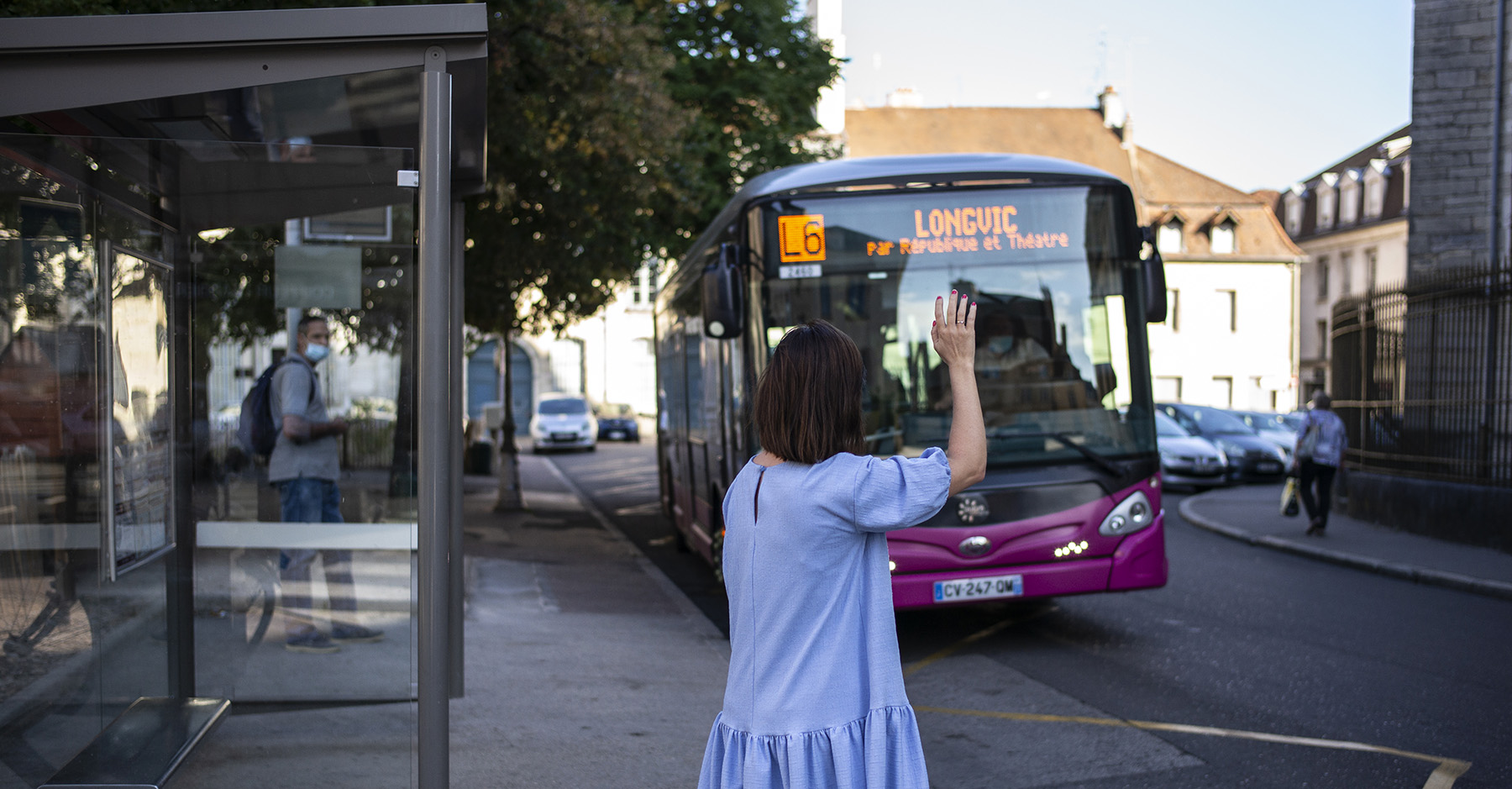AT DESIGNATED STOPS
At all bus and tram stops in the network you will find:
Route timetables at the stop
The passenger calendar that allows you to identify the time period you are in
The main Bus&Tram fares
GETTING READY TO TAKE THE BUS OR THE TRAM:
- prepare your DiviaMobilités Card or your ticket loaded with a trip (Voyage) or subscription (Abonnement) PASS
- or have cash ready to buy a stop-gap PASS 1h from the bus driver
- or prepare your contact-free payment card to validate and pay for your ticket at the designated validator
- at tram stations, you must buy your ticket before boarding the tram at the ticket machines found at all stations. The ticket vending machines accept bank cards and cash.
- always board the bus through the front door
On buses or trams, validation is compulsory, even on connections. If you are travelling with a child under 5 years of age, they can ride free of charge.
WHEN THE BUS ARRIVES
Stops are optional: signal the driver sufficiently in advance to stop. Always board through the front door and don't forget to validate your ticket.
Sit at the back of the bus, near the exit doors. This will clear the aisle and the boarding area in front.
WHEN THE TRAM ARRIVES
The tram always stops at all stations.
Allow passengers to disembark before boarding. Don't forget to validate your ticket. Be careful not to remain in front of the validators.
HAVE A PLEASANT TRIP
In the bus and tram, a TOTEM display shows you the line and its destination.
It tells you the next stop, travel times and notable sites nearby (schools, medical facilities, government offices, etc.), and alerts you to possible service disruptions. Audible announcements on board indicate the names of the next stops and provide information for passengers.
Questions? Need clarification? On the bus, the driver will be able to assist you.
SOME RULES TO FOLLOW FOR A GOOD TRIP
The main rules are posted on board the vehicles:
- During peak hours, a young child will be safer if you sit and hold them in your arms. Folding your stroller allows more space for other passengers. If you can't fold it, be sure to lock the brakes.
- If you're standing, hold onto the bars firmly.
- Offer your seat to those who need it most: pregnant women, the elderly, the disabled or those with reduced mobility. Free up seats reserved for these passengers.
- With the exception of guide and medical companion dogs, only small and non-dangerous pets (dog or cat) are allowed on buses and trams, provided they are transported in a suitable carrier.
- Bulky objects can be refused by the driver, who is the sole judge of what can be admitted on board the bus/tram. It is prohibited to transport hazardous materials or objects on buses and trams.
- Folding bicycles and scooters are accepted on buses and trams, provided they are folded.
- Rollerblading on board is prohibited.
- As a courtesy to other passengers and to ensure that the audible announcements on board are clearly heard, please turn down the sound on your smartphone. Any improper use of a sound device is punishable by a fine.
- Passengers may only board and disembark at designated stops.
- The bus and tram are non-smoking areas. It is strictly prohibited to smoke or vape on board, and to consume alcohol or illegal products.
GETTING OFF THE BUS SAFELY
Once the bus has stopped, exit using the back and middle doors. If the doors close before you disembark, press the "Push to Open" button.
Wait for the bus to leave before crossing the street. It's safer.
GETTING OFF THE TRAM SAFELY
Once the tram has stopped, press the flashing buttons to open the doors and get off. If the doors close before you disembark, press the "Push to Open" button again.
Wait for the tram to leave before crossing the street. It's safer.

